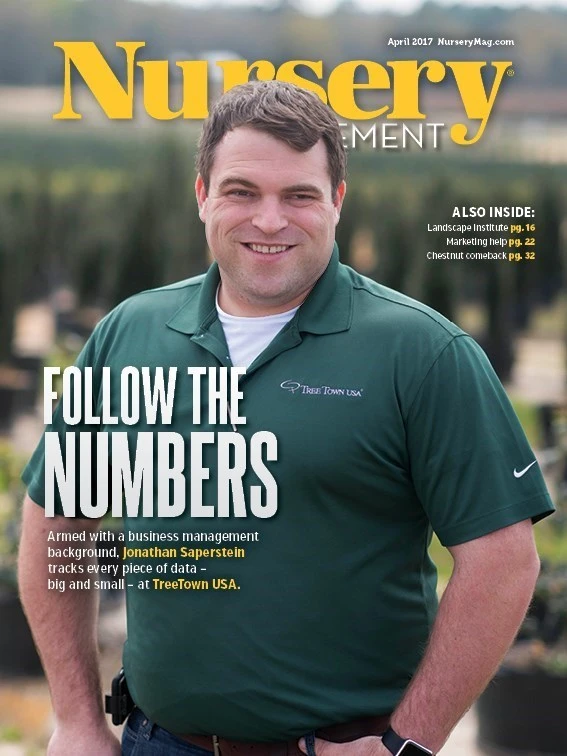
American chestnut trees were once among the most majestic hardwood trees in the eastern deciduous forests, many reaching 80 to 120 feet in height and eight feet or more in diameter.
The “then boundless chestnut woods” Thoreau wrote about in Walden once grew throughout the Appalachian mountains. They provided habitat and a mast crop for wildlife, a nutritious nut crop for humans and a source of valuable timber. Because of their rapid growth rate and rot-resistant wood, they also have significant potential for carbon sequestration, important in these days of climate change.
The species has a sad story to tell. Of the estimated four billion American chestnut trees that once grew from Maine to Georgia, only a remnant survive today.
The species was nearly wiped out by chestnut blight, a devastating disease caused by the exotic fungal pathogen Cryphonectria parasitica. This fungus was accidentally introduced into the United States over a century ago as people began to import Asian species of chestnut. It reduced the American chestnut from the dominant canopy species in the eastern forests to little more than a rare shrub.
After battling the blight for more than a century, researchers are using the modern tools of breeding, bio-control methods that rely on a virus that inhibits the growth of the infecting fungus, and direct genetic modification to return the American chestnut to its keystone position in our forests. To restore this beloved tree, we will need every tool available. It’s taken 26 years of research involving a team of more than 100 university scientists and students here at the not-for-profit American Chestnut Research and Restoration Project, but we’ve finally developed a non-patented, blight-resistant American chestnut tree.
One genetic tweak

My research partner, Dr. Chuck Maynard, and I work with a team at the SUNY College of Environmental Science and Forestry (ESF). We’ve tested more than 30 genes from different plant species that could potentially enhance blight resistance. To date, a gene from bread wheat has proven most effective at protecting the tree from the fungus-caused blight.
This wheat gene produces an enzyme called oxalate oxidase (OxO), which detoxifies the oxalate that the fungus uses to form deadly cankers on the stems. This common defense enzyme is found in all grain crops as well as in bananas, strawberries, peanuts and other familiar foods consumed daily by billions of humans and animals, and it’s unrelated to gluten proteins.
We’ve added the OxO gene (and a marker gene to help us ensure the resistance-enhancing gene is present) to the chestnut genome, which contains around 40,000 other genes. This is a minuscule alteration compared to the products of many traditional breeding methods. Genetic engineering allows us to produce a blight-resistant American chestnut that’s genetically over 99.999 percent identical to wild-type American chestnuts.
The next steps
One of the challenges of genetic engineering that is not faced by any other methods of genetic modification also serves as a safeguard. We must shepherd these trees through federal regulatory review by the U.S. Department of Agriculture, the Environmental Protection Agency and the Food and Drug Administration. Our plan is to submit these applications as we finish collecting the necessary data; we expect the process to take three to five years. Once we receive (anticipated) approval, we will quickly make the trees available to the public.
This project is unique because it is the first to seek approval of a transgenic plant to help save a species and restore a forest’s ecology. Our forests face many challenges from exotic pests and pathogens. The American chestnut can serve as a model system for protecting our forest’s health.

Direct genetic modification will likely not be used in isolation. Integration might improve the outcomes of both the conventional hybrid/backcross breeding program of the American Chestnut Foundation and our genetic engineering program. Allowing crosses between the best trees from both programs will allow gene stacking – having multiple and diverse resistance genes in a single tree – with each working in a different way to stop the blight. This would significantly decrease the chances that the blight could ever overcome the resistance.
A unique aspect of the genetically engineered American chestnut trees is their ability to rescue the genetic diversity in the small surviving population of American chestnut trees. When we cross our blight-resistant transgenic trees to these surviving mother trees, directly in the wild or from nuts gathered from them and grown in orchards, we’re helping preserve the remaining wild genes.
Half the resulting offspring will be fully blight-resistant, while also containing half the genes from the mother tree. By making these crosses, the restoration trees will be ecologically adapted to the diverse environments in which they’ll grow. These trees could also be used to boost the genetic diversity of the hybrid/backcross breeding program, or used directly for restoration and left to fend for themselves, allowing natural selection to make the final determination of the effectiveness of our efforts.
The American chestnut was one of the most important hardwood tree species in the eastern forests of North America, and it can be again. This tiny change in the genome will hopefully be a huge step toward putting the American chestnut on a path to recovery.
For more: William Powell, www.esf.edu, wapowell@esf.edu; American Chestnut Foundation, www.acf.org.

Explore the April 2017 Issue
Check out more from this issue and find your next story to read.
Latest from Nursery Management
- John Ruter shares UGA's latest woody and herbaceous ornamental plant breeding projects
- Conor Foy joins EHR's national sales team
- Pantone announces its 2026 Color of the Year
- Syngenta granted federal registration for Trefinti nematicide/fungicide in ornamental market
- Get to know Kayela Aeppli
- HILA 2025 video highlights: John Gaydos of Proven Winners
- Q&A with Justin Bartlett
- Be the best choice





